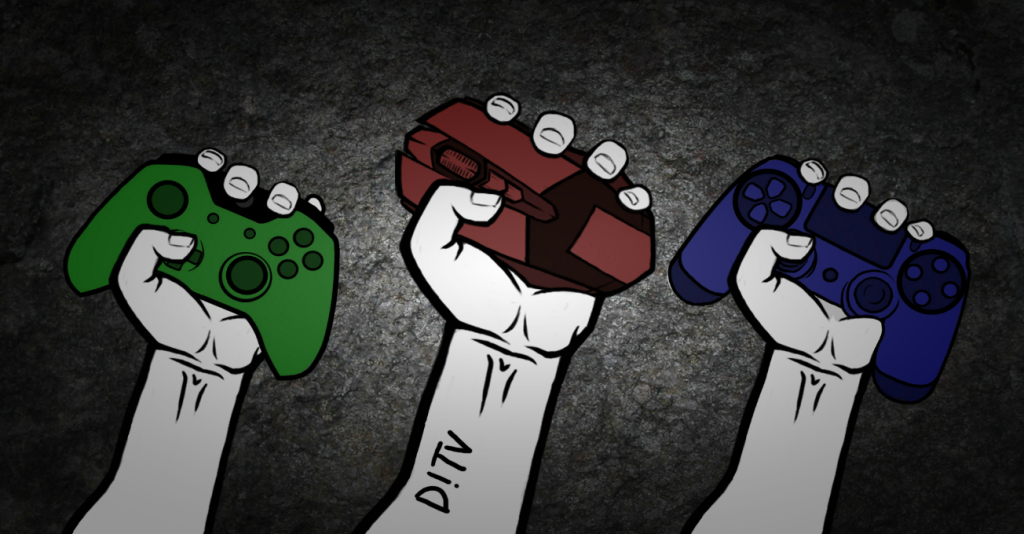After a year of operations, eSports streaming platform DingIt has attracted 80 million total unique viewers and 20 million current monthly unique viewers. The company has focused on creating professionally produced content that supports grassroots gaming as well as larger, high-end tournaments.
To date, DingIt has invested over $400,000 on original content, as well as acquiring the rights to third-party eSports streams that have resulted in over 800 broadcasts in the last year.
Simon Voysey, chief revenue officer at DingIt, explains the growth opportunities for the company into new territories, and why eSports remains ripe for expansion, in this exclusive interview.
 What differentiates DingIt from other livestreaming platforms?
What differentiates DingIt from other livestreaming platforms?
DingIt is a streaming platform that is underpinned by some unique technology. We developed a new way of delivering video to the end user that results in a better quality stream whilst using less bandwidth. This means that more people are able to enjoy eSports around the world, even in areas where internet connections are not as good. We also try to differentiate ourselves with the content we produce. DingIt, unlike most other platforms, is a content producer as well as a distribution platform. We can decide what types of tournaments to run and what level to focus on. We decided very early on that we would feature mid-level tournaments that are accessible to up-and-coming gamers. By doing this we have been able to produce regular, professionally produced content that is streamed daily and weekly. We hope to add value to the gaming community by supporting grassroots events as well as the larger tournaments that we have planned.
What’s been the key to acquiring 20 million monthly users since launching?
We have been very pleased by the audience growth and we have worked very hard to get to this point. The growth can be attributed to a number of factors. Whilst we run regular tournaments that provide new content for our viewers every day, we also create highlights clips of the action which generate large audiences. These highlights are short ‘best of’ moments that show a particular piece of skill or cunning. Viewers will often watch quite a few of these clips in a session but may also progress into other areas of the site too, so the highlights act as a gateway to eSports tournaments.
Another reason for our growth stems from the technology we have built. eSports is growing at a fierce rate, but none more so than in developing markets such as Brazil, India and China. We have been able to capitalize on growth in these emerging markets through our ability to deliver streams to areas that do not have a great internet connection. We are dedicated to delivering the best possible experience to our viewers, so making it possible for fans all over the world to experience eSports is a core objective of ours.
Twitch dominates the livestreaming space today. How much room is there for other livestreaming platforms, especially in countries like Korea?
We believe the model for eSports streaming is broken. Existing platforms are struggling to run profitable businesses because the cost of streaming video in large volumes is prohibitive. What inevitably happens is that the quality is squeezed and the user suffers. The combination of our pioneering broadcast app and the integrations we have with Akamai, the largest CDN in the world, means that we are able to deliver higher quality streams at a lower cost. This is a huge step forward for video streaming and has applications well beyond gaming. For now though, we are laser-focused on the experience. Until recently, we required our viewers to download a plug-in or Chrome extension to benefit from the higher quality streams we push out. Now we are also able to offer a stream without the need for the extension in response to what our audience is telling us they want.
We believe that there is room in the market as long as we continue to focus on the viewing experience. We set up DingIt.kr because we wanted to be part of the biggest eSports market in the world. We have a huge amount of respect for the Korean market and we have plans to source content and run tournaments there this year. Korea is also strategically important for our entry into China, something we have been working on for a while now.
What opportunities do new areas such as South America and Africa open up for eSports moving forward?
We are very interested in emerging markets and our technology gives us an edge when it comes to distribution into these countries. We feel like we are making a genuine contribution to the industry by making it possible for gamers to access new content for the first time. We’re very excited to be part of this industry and even more so, to be able to bring gaming to new audiences. ESports is a truly global phenomenon so we hope to be a positive force in its international development. We are already eyeing a South American office.
Can you explain what eSports titles you’re focusing on and why?
The three titles we are focusing on currently are StarCraft II, CS:GO and Hearthstone. These are all games where we feel we can add value to the respective communities and which command a big enough audience to justify long-term investment. We are already planning to diversify the titles we feature but the emphasis will be on quality rather than quantity.
What role does exclusive content play in the eSports landscape today for live streaming platforms?
Exclusive versus non-exclusive content is always a question on content creators’ (and distributors’) minds. On the one hand, exclusive content offers a streaming platform a good draw for viewership and content creators the ability to command a higher fee. However, non-exclusive empowers viewers to use the streaming service of their choice and content creators a larger audience in total. At DingIt, we see value in both. Thanks to our technology, we are able to make much smaller viewer numbers commercially viable and offer increased revenue share for non-exclusive content, it also means users come to our platform for the better experience rather than as the only option.
How have you gone about investing in exclusive content?
When looking at exclusive content, we always try to add value to a gaming community and enhance viewer experience while also balancing commercial interests. As both a platform and content creator, we mainly focus on original content as our exclusive offerings. This way, we are able to work closely with players, teams and sponsors to create events that viewers will enjoy. The most important thing we keep in mind with all our content is that it needs to be sustainable. While a couple of large events may be great short-term, if it isn’t viable long-term it can leave a void if they stop running.
We’ve seen a lot of investment in the Fantasy eSports and betting markets last year. How does this impact livestreaming of eSports events?
With all new entrants into the eSports market it is important to look at how both the brands and consumers can benefit. Betting is a huge driving force in traditional sports, so it is exciting to see how it will influence eSports. One concern with betting is with eSports still being young, competitive integrity is paramount. As a content creator, working with the betting sectors is more challenging than other sponsors due to restrictions being in-place from game publishers.
What role do hosted tournaments play for your company?
We are heavily focused on eSports content. Firstly, it allows us to provide high-quality, engaging content on a consistent basis and importantly, gives the raw footage to create professional highlights and short form content which is appealing to a broader audience of gamers.
Outside of the professional eSports landscape, what opportunities do the amateur tournaments open up for connecting with consumers?
We have always believed that a combination of amateur and professional tournaments are good for our platform, our audience and the gaming industry as a whole. We have run lower-level tournaments since the start and we have also been looking for amateur invitationals to help bring budding gamers through the ranks.
What are your growth projections for your second year?
We hope to continue the success of our first year and to grow the platform through the creation of more quality and exclusive content. We’re not discussing exact numbers, but the site functionality will undergo some development and we will also be looking to build out our production capabilities to make this happen.

